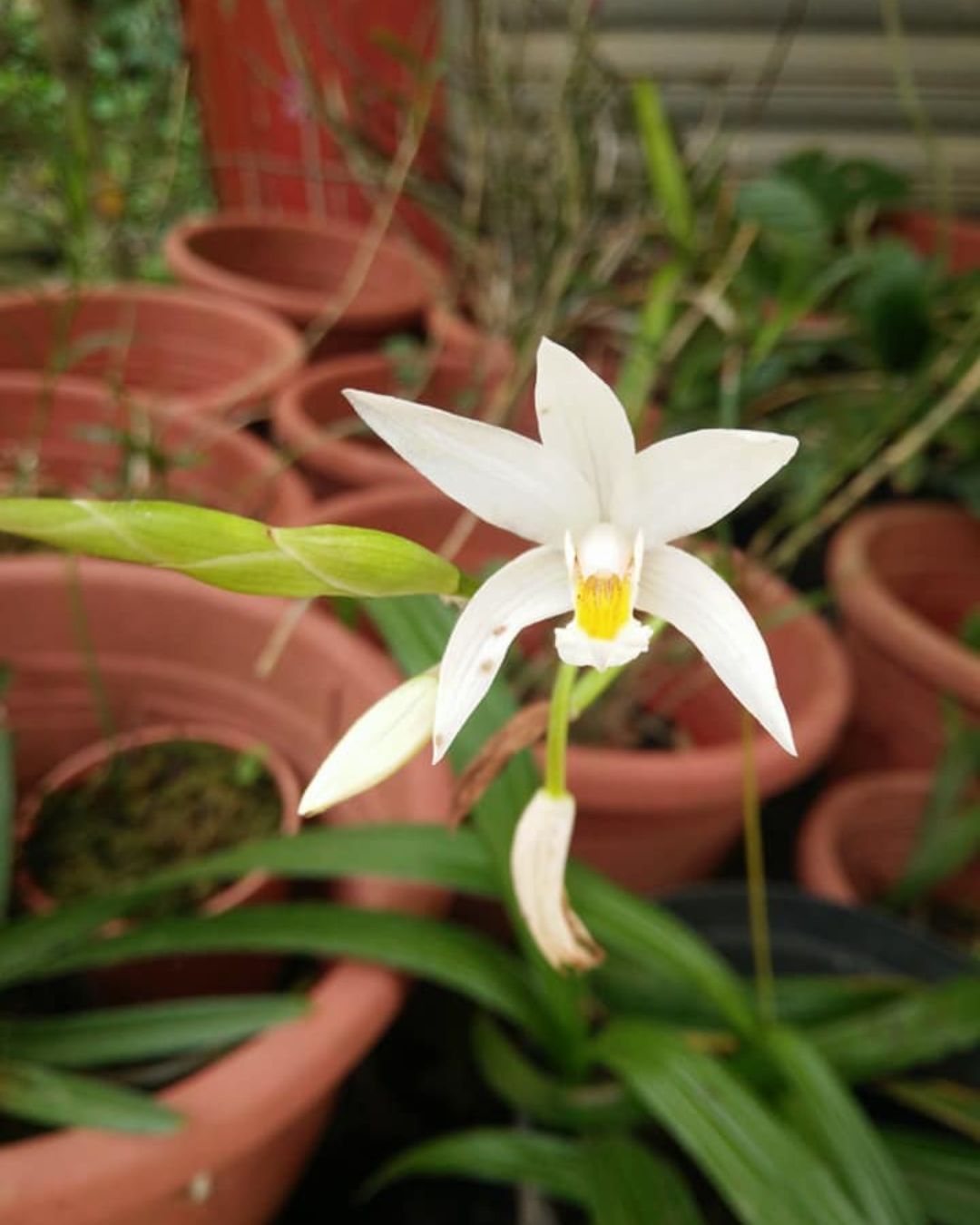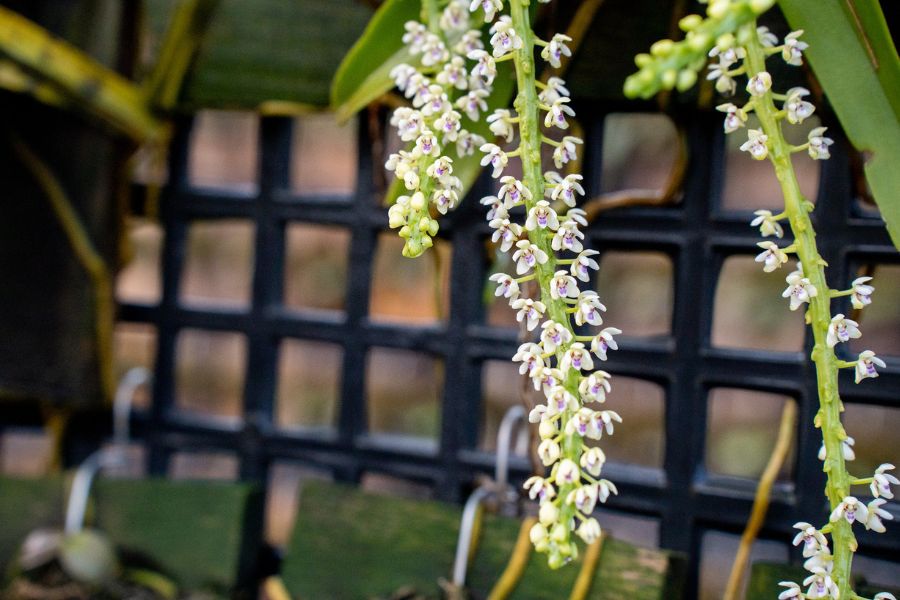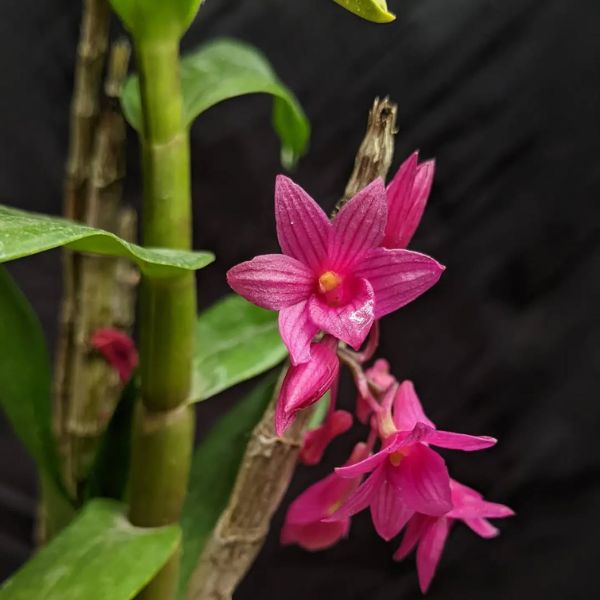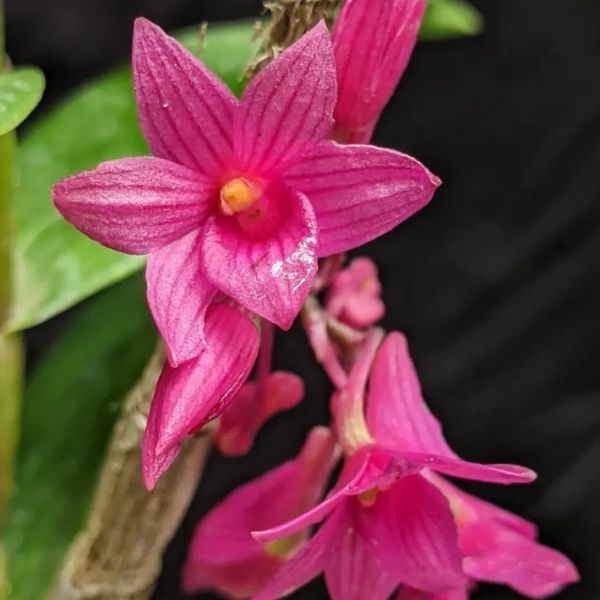From Koto Island to Orchid Island: A Beautiful Transformation
Once known as Koto Island, Lanyu (Orchid Island) was renamed to reflecting the island’s natural heritage after its native moth orchids gained recognition at international exhibitions,. Spanning approximately 48 square kilometers, Lanyu is the only region in Taiwan classified as having a tropical rainforest climate. Its highest peak, Mount Hongtou, reaches 548 meters above sea level. According to scientific records, Lanyu is home to 65 species of orchids, with 34 species—over half—classified as threatened, highlighting the urgent need for conservation. The island’s unique ecosystem and biodiversity have attracted researchers since the 19th century, making it a treasured hotspot of rare flora.

(Photo credit: Suihua Shan Website)

(Photo credit: orchid_channel)
Secret Habitat of Rare Orchids
Tuberolabium kotoense, called “Hongtou,” in Chinese blooms only in winter and inhabits the inaccessible canopy branches of Lanyu’s mountain forests, facing strong winds and crashing waves. Its small, almond-scented flowers cluster on spikes that can extend over 20 centimeters. Vanda lamellata, the only species of its genus found in Taiwan, was first identified in 1934 and named after the Yami people (“V. amiensis”). Once thriving in Lanyu’s southern forests, it vanished for nearly 40 years due to overharvesting.
In 2010, researchers from the Taiwan Forestry Research Institute and National Pingtung University of Science and Technology rediscovered dozens of flowering individuals on cliffs over 100 meters high. These rare orchids grow in human-inaccessible habitats, underscoring their ecological sensitivity and value.

(Photo credit: @jasperh928)

(Photo credit: @botanysciencechannel)
Scientific Restoration: A Precision Process
In May 2018, the Dr. Cecilia Koo Botanic Conservation Center partnered with the Department of Nuclear Back-End Management, Taiwan Power Company, to launch a conservation project targeting four endangered orchids: Tuberolabium kotoense, Bletilla formosana f. kotoensis, Dendrobium goldschmidtianum, and Vanda lamellata. The restoration process is intricate—after pollination, seed pods require six months to a year to mature. The seeds are then sown aseptically and grown in flasks, progressing through several stages before being transferred to a greenhouse.

(Photo credit: Suihua Shan Website)
Each stage requires moving the orchids multiple times within sterile environments, taking 1.5 to 2 years. Acclimating them to natural light and humidity requires an additional two years before they are ready for release. Senior Collection Manager Chen Chun-Ming of the conservation center has compiled complete cultivation data for 56 orchid species, providing a vital reference for preservation efforts.

(Photo credit: Peng Mie)

(Photo credit: @jasperh928)
Cross-Sector Collaboration Yields Results
Phalaenopsis equestris, unseen since Japanese rule, was rediscovered in 2011 on Xiao Lanyu. Since it cannot self-pollinate, researchers had to locate genetic relatives to maintain diversity. Through the “Splendid Lanyu” initiative by the National Museum of Natural Science Foundation, an unused staff building and greenhouse from the Lanyu Township Office were repurposed into a research base, and a display hall was established with support from the Lan An Cultural and Educational Foundation. These efforts have transformed orchids into ambassadors for the island’s 65 native orchid species, bringing hope for ecological restoration.
To date, the conservation center has successfully cultivated 4,090 individuals of Dendrobium goldschmidtianum, 751 of Bletilla formosana f. kotoensis, 4,118 of Vanda lamellata, and 3,293 of Tuberolabium kotoense. More than 2,000 of these orchids have been sent to Taiwan Power Company’s Lanyu storage site for climate adaptation. In addition, 1,370 orchids have been adopted by local residents, homestays, restaurants, bars, communities, public offices, and schools. In September 2022, Professor Lee Chia-Wei led a team of scholars and experts to affix 200 cultivated orchids onto banyan trees outside a restaurant—completing their symbolic “return home.”

(Photo credit: @dadasphal)




